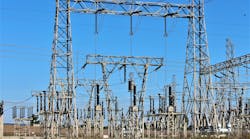To meet growing power demand, Nashville Electric Service (NES; Nashville, Tennessee, U.S.), with assistance from ABB Utility Consulting, completed a 20-year transmission and distribution (T&D) construction plan covering the period from July 2001 to June 2021. The long-range forecast and planning process required an extensive integration effort of existing and new software tools. These tools include CADOPS, FEEDERALL, RELINET, FORESITE and PSS/E. The new applications under implementation in the study were the FORESITE spatial load forecasting model and the RELINET reliability tool. An important accomplishment was the integration of the outage management system (OMS) with FEEDERALL and RELINET.
Typically, NES performs long-range T&D plans every five years, or when increases in system demand warrant more frequent iterations. The time and manual effort required to complete these studies make it difficult to perform analyses with the most current information. An automated approach was necessary to improve the planning process and better assess the dynamic power-delivery system. The goal was to improve NES's ability to accurately and quickly evaluate its system needs. The balance of this article details the new and existing tools used in the integration process and the step-by-step process of creating the long-range plan.
NES long-range planning team members included Randy Hale, Kelli Carr, Vaughn Spears, Steve Clark, Gregory Johnston and Andy Foster.
Outage Management System
NES uses CADOPS as its OMS. This program provides control room operators access to data, communications and advanced applications needed for efficient distribution management. CADOPS provides real-time information for all operational activities, including trouble reports, field crew actions and changes to the distribution system. The data used in CADOPS comes from a GIS database.
Automated OMS have proven more accurate in tracking interruptions compared to the manual systems some utilities still use. The benefits of NES having an automated system are, one, analyzing historical data is much easier, and two, it is easy to identify the reported root causes of interruptions. When completing the reliability portion of the NES long-range plan, it is essential that all projects have adequate supporting interruption data.
The CADOPS distribution feeder database serves as input into the NES power flow and reliability-analysis programs. The up-to-date database enhances the analysis of each distribution program.
Predictive Reliability Analysis
NES uses RELINET as the predictive reliability software for its distribution feeders. Using component data and system topology, RELINET models system improvements and evaluates reliability alternatives (existing or proposed), including the use of custom power devices.
In the reliability analysis, NES analyzed 10% of its distribution feeders using the RELINET predictive reliability assessment program. The circuits with the highest amount of outage minutes were chosen. The reliability analysis showed that based solely on circuit configuration using standard equipment failure rates, the feeder reliability indices should have been better. The actual statistics were much worse than expected indicating the failure rate of the predominant contributor (trees) was much higher than reported.
Using this program, NES can easily quantify the percent improvement of a reliability index after making a reliability improvement.
As an example, for a typical NES feeder, the addition of one recloser and one fuse made an improvement in SAIDI (System Average Interruption Duration Index) of 15% and an improvement in SAIFI (System Average Interruption Frequency Index) of 20%. Proposed reliability improvement projects can be prioritized based on a cost benefit analysis. This is the primary advantage to incorporating RELINET into the planning process.
This program is also integrated with the CADOPS feeder database, using the feeder models as inputs.
Spatial Load Forecasting
NES uses FORESITE as its long-range distribution system spatial forecasting tool. FORESITE generates small-area load forecasts by simulating the effects and interactions of real-world factors. Population growth, land-use development, changes in customer classes and electric appliance demand profiles are considered within the parameters of planned or existing roadways, waterways, lakes, protected habitats and low-lying areas. Using an algorithm, FORESITE produces a spatial load forecast and a T&D expansion plan that optimizes the match between needed resources and land use.
One of the inputs into the spatial load model is the 24-hour load curves for the various types of customer classes. NES uses six load-bearing customer classes to simplify the model, although many specific types can be used. (The more that are used, the more complicated the model and the more difficult it is to update the model in future updates.)
These six classes are: low-density residential, medium-density residential, high-density residential, commercial arterial, commercial offices and institutions, and industrial.
To obtain more accurate load shapes of each customer class, NES line crews installed “load loggers” on a sample of customer overhead line taps. These devices record the load profile or load shape of customers over 24 hours. A sample of this information was gathered for different customers and the resultant profiles input into the FORESITE model.
Another input into the spatial model was a global forecast for the entire NES system. This was developed through the trending of weather-adjusted historical system load data. The global forecast answers the question, “How much load will be added to the entire NES system over the 20-year time horizon?” The FORESITE model then uses the global forecast along with other load-growth factors and preferential data to illustrate where and when each small area (one acre) of load will develop.
Using the FORESITE program, NES created a land-use model of the Nashville area using the most recent satellite imagery and local knowledge of customers. The base-year land-use model served as the starting point for the spatial forecast.
There is a distinct advantage in applying a spatial technique over trending on a small area basis. Unlike trending, when an area of land is fully developed, there will be little or no load growth in a spatial forecast. However, in a trend analysis, a positive trend will continue indefinitely. During high-growth periods, a trend analysis will show electric load continuously growing, regardless of the land usage and availability in the region. For NES, the spatial technique is a more realistic and accurate record and forecast of electric load.
The NES service territory was divided up into one-acre cells. Each cell has a unique color that represents the land-use class of that acre of land. For example, green represents a residential load-bearing land-use class, blue represents water (non-load bearing land use), and white represents land that is vacant and available for development. Using this program, NES selected approximate locations and the timing for additional distribution substation capacity over the next 20 years. This included new substation sites and upgrading existing substations.
Distribution Feeder Power Flow
NES uses FEEDERALL as its power-flow program for the distribution system, and uses it primarily to analyze feeder voltage and thermal limits. FEEDERALL's advanced optimization algorithms allow utilities to determine the ideal system requirements for capacitor siting and sizing, multi-feeder configuration, feeder reinforcements and protective-device coordination. With the FEEDERALL, NES engineers develop multiple case-study files that allow them to analyze various scenarios and track implementation. This program is integrated with the CADOPS feeder database using the feeder models as inputs.
Transmission Power Flow
NES uses the PSS/E power flow program to assess the transmission system. This program allows transmission system upgrades to be modeled showing the resulting effect on the entire transmission system. Of course, the transmission system will grow over the 20-year planning time horizon. Load-growth information from the spatial model was used to project the electric load growth for the NES system.
NES is served with several Tennessee Valley Authority transmission lines in addition to their own. 161 kV and 69 kV are the transmission voltages around Nashville. The transmission plan involved looking at several transmission scenarios, starting with the ultimate needs of the area in 20 years and working in reverse order to develop projects and alternatives. This reverse approach proved very effective for NES because of the ease at which the transmission expansion scenarios could be modeled and analyzed.
There were many aspects reviewed in the transmission-planning process. Line upgrades, new transformers, voltage conversion, capacitor placement, the use of autotransformers and mobile transformers were all analyzed and modeled using PSS/E.
Transmission projects constitute the largest capital expenditures of the NES budget on a per-project basis over the next 20 years. Consequently, NES focused a great deal of attention in developing these costs for each transmission-expansion scenario. Finally, a cost/benefit analysis determined the most rational transmission expansion plan for the future of Nashville.
The result of the planning process is the project schedule and capital budget projection for future T&D substations. This schedule becomes the roadmap for future transmission, substation and distribution system expansion. NES has created a template for performing all future long-range plans by using an integrated approach to system planning, which adapted existing software capability with available industry programs.
Leonard Leech is the design-engineering manager for Nashville Electric Service (NES; Nashville, Tennessee, U.S.). He started with NES in 1964 and has varied experience including former positions specific to: planning and control, and relay and communications. He is active in technical associations and committee work including leadership roles in IEEE and APPA.
James J. Burke is an executive consultant with ABB (Raleigh, North Carolina, U.S.). He has published more than 100 technical papers, including two prize papers, and is the author of the book “Power Distribution Engineering: Fundamentals and Applications”, now in its 7th printing. He is a fellow of the IEEE and the 1996 recipient of the IEEE award for “Excellence in Power Distribution Engineering.”

